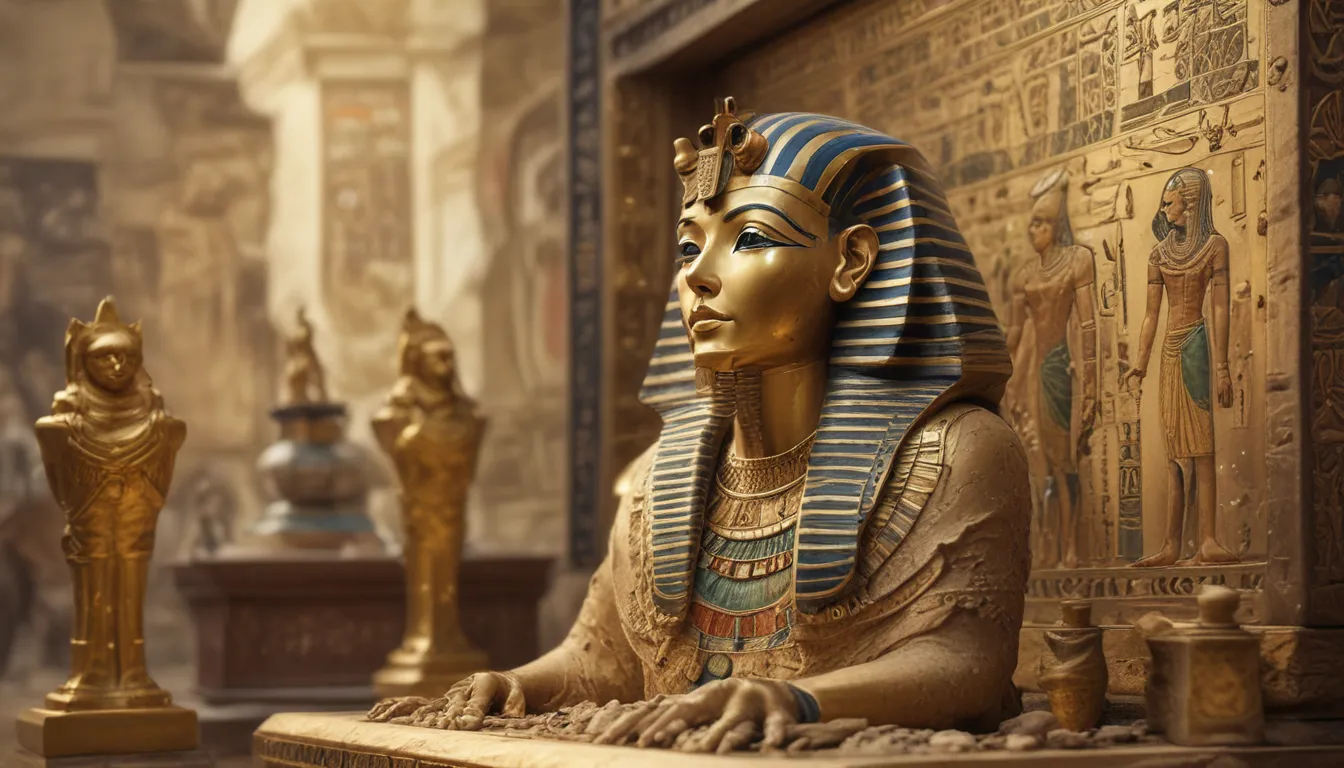The images in our articles are for illustrative purposes only and may not exactly match the content. They are intended to capture your interest and complement the text, not to replace it.
Welcome to the remarkable world of the King Tutankhamun statue, a captivating piece of art that continues to intrigue and inspire us with its mystery and beauty. In this article, we will explore 14 surprising facts about this iconic statue, shedding light on its history, cultural significance, and the fascinating era of ancient Egypt it represents.
The Towering Presence of the King Tutankhamun Statue
Standing at an impressive height of over six feet, the King Tutankhamun statue commands attention and awe with its towering presence. Crafted from precious materials, including gold, the statue symbolizes the power and status of the young pharaoh.
A Glimpse into Ancient Egypt
The King Tutankhamun statue offers a unique opportunity to connect with the past and gain a deeper understanding of the powerful reign of the young pharaoh and the enduring legacy of ancient Egypt. Visiting the statue in the Egyptian Museum in Cairo allows you to delve into the world of ancient Egypt and witness its grandeur firsthand.
Discovering the Legend of King Tutankhamun
The King Tutankhamun statue was discovered in the famous tomb of the young pharaoh in the Valley of the Kings in Egypt. This tomb, filled with treasures and artifacts, showcases the wealth and grandeur of the ancient Egyptian civilization, offering valuable insights into its rich history and culture.
Depicting a Powerful Ruler
Depicting King Tutankhamun as a powerful ruler, the statue showcases the pharaoh standing tall with symbols of authority in his hands: a scepter in his left hand and a flail in his right. These symbols exemplify his prominent position as the ruler of Egypt during the 18th dynasty of ancient Egypt.
The Art of Intricate Detailing
Every aspect of the King Tutankhamun statue is meticulously crafted with intricate detailing, from the delicate facial features to the finely carved hieroglyphics on the base. This exceptional craftsmanship highlights the artistic and cultural achievements of ancient Egyptian artisans.
Unveiling the Inscriptions
Embedded within the King Tutankhamun statue are inscriptions containing hieroglyphic texts that provide insights into the pharaoh’s lineage, achievements, and religious beliefs. These inscriptions allow us to unravel the mysteries of ancient Egypt and gain a deeper understanding of its culture and history.
Symbolic Meanings and Spiritual Connections
Beyond its physical representation, the King Tutankhamun statue is believed to have a symbolic meaning, serving as a focal point for religious rituals or as a means of immortalizing the pharaoh’s divine status in the afterlife. Dedicated to the god Amun-Ra, the statue highlights the pharaoh’s close association with the gods and his role as their earthly representative.
Preserving History Through Restoration
The King Tutankhamun statue underwent extensive restoration efforts to preserve its original splendor, showcasing the dedication and expertise of modern archaeologists and conservators in safeguarding our ancient heritage. These restoration works highlight the ongoing commitment to preserving and protecting our cultural legacy.
A Testament to Ancient Egypt’s Legacy
The King Tutankhamun statue serves as a powerful symbol of the enduring legacy of the young pharaoh and Egypt’s ancient civilization. Its captivating beauty and historical significance have inspired countless replicas and reproductions worldwide, preserving the fascination and admiration for King Tutankhamun and his era.
Journeying Through Ancient Egypt
Visiting the King Tutankhamun statue provides a glimpse into the extraordinary life and reign of the young pharaoh and offers a unique opportunity to immerse yourself in the world of ancient Egypt. Its presence transports visitors back in time, allowing them to connect with the past and gain a deeper understanding of this fascinating era in history.
Conclusion: Embracing the Rich History of Ancient Egypt
In conclusion, the King Tutankhamun statue holds a significant historical and cultural value, showcasing the artistry, craftsmanship, and symbolism of ancient Egypt. As we continue to study and appreciate this remarkable masterpiece, it reminds us of the rich and fascinating history of ancient Egypt and the enduring legacy of King Tutankhamun.
Uncover the Secrets of Ancient Egypt
Delve deeper into the enigmatic world of ancient Egypt with our comprehensive collection of Ancient Egypt facts. Marvel at the grandeur of the Pharaoh of the Middle Kingdom of Egypt statue, whose surprising facts will leave you in awe. Embark on a virtual journey through the mysterious Valley of the Kings, where the secrets of the ancients await your discovery.
FAQs
-
Where is the King Tutankhamun statue located?
The King Tutankhamun statue is currently housed in the Egyptian Museum in Cairo, Egypt. -
How was the King Tutankhamun statue discovered?
The statue was discovered in 1924 during the excavations of the tomb of King Tutankhamun by the British archaeologist Howard Carter. -
What material was used to create the King Tutankhamun statue?
The statue is made of wood and is covered in a layer of gesso, painted with elaborate details using vibrant colors. -
Are there any hidden secrets or symbols in the King Tutankhamun statue?
Yes, the statue’s hieroglyphic inscriptions and symbolic motifs are believed to hold hidden meanings related to the pharaoh’s journey to the afterlife.
Trust in our commitment to quality and authenticity as you explore and learn with us. Enjoy uncovering the captivating insights and mysteries of ancient Egypt.






